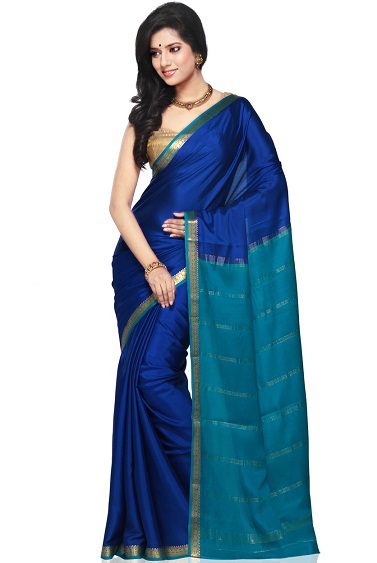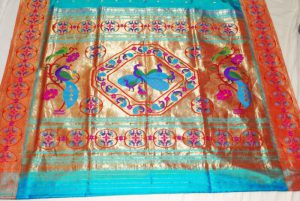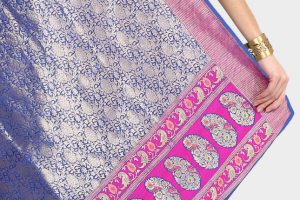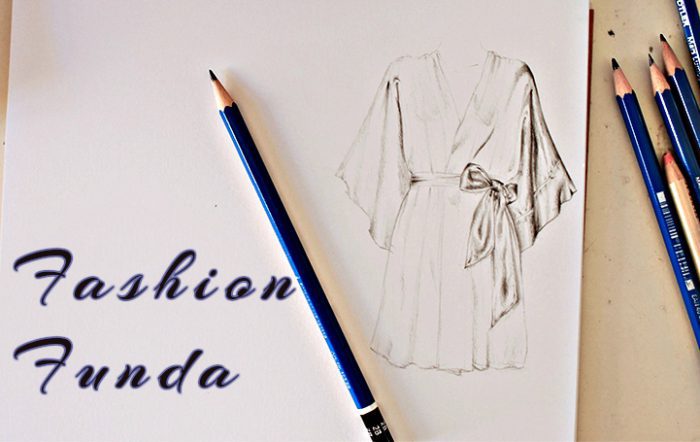Reading Time: 5 minutes
Shameena tells us about other popular verities of saris, Mysore Silk, Irkal of Karnataka, Paithani and Banarasi saris, this week, in the second and final part of the two-part article on saris. Read more in the weekly column, exclusively for Different Truths.
Let’s talk about Mysore Silk and Irkal of Karnataka, first.
A land of ancient customs and traditions, Karnataka is also home to the queen of silks, the mulberry silk. Involved in its production since the Tipu Sultan Era, Karnataka has a rich history of silken rustles. From the enchanting plain weaves of Mysore silk to the more recent and trendy printed silk saris, the heavily ornate Bangalore silks to humble wear Irkal saris, every silk sari is woven in various parts of Karnataka are dream possessions of every Indian woman.

Every weave of Karnataka has an enriching story to share – the story of creativity and hard work. The saris of Karnataka while, on the one hand, share a very intricate bond with their weavers, on the other they share a sweet and delightful bond with their wearers. These silk sarees partake in every happy occasion in a woman’s life be it the joy of weddings or the celebration of festivals and every such happy occasion of time spent together.
Karnataka as a state of silk has survived along the length and breadth of the sub-continent because of its vivid variety in saris. Some of the saris produced in the state that have made a mark on the world map are:
Considered the purest silk saris in the country, Mysore silk saris come in a hue of plains with a golden lace at the edge of the saree, giving it a classic and sleek look. These sarees undergo very high standards of production and they remain new and good looking for decades.
Paithani Sari from the West
This is a hand woven silk saree with a rich, ornamental Zari (gold thread) Pallov (Pallu) and border, which is characterised by borders of an oblique square design, and a Pallov with a peacock design. The Paithani sari is known all over the world over for its uniqueness.


The art of Paithan is more than 2000 years old, developed in the city of Pratishthan ruled by the legendary Satavahanas ruler Shalivahana, now Paithan, by the river Godavari in Marathwada, about 50 km from Aurangabad. In the far past, it had been an international trade centre for silk and zari.
The Peshwas had a special love for Paithani textiles. During the 17th century, the Mughal emperor Aurangzeb patronised the Paithani silk weavers and introduced new motif that was called Aurangzebi. He prohibited weavers to weave ‘Jamdanis’ except for his court and punished the weavers who disobeyed his orders.
Later during the 19-20th centuries, the Nizam of Hyderabad ordered large quantities of Paithani silks. Paithani possibly survived because of the patronage of the household of the Nizam of Hyderabad. Begum Niloufer, from Nizam family, is attributed to her contribution of the motif Parinda (Pheasant bird).
Human expertise may have been replaced by modern machines. However, no machine-made fabric can be compared with the hand-made Paithani saris by the master craftsmen of Maharashtra.
The decline in the production of Paithani began with the industrial revolution when the mills introduced cheap fabric into the traditional market. The number of looms in Paithan gradually reduced to very few.
Initially, weaving activities were limited to Paithan town till the 17th century. Later weaving activities were transferred to Yeola (a village in Nashik district), with the help of local wealthy people. The sale of Paithani saree picked up from 1984-85 and Yeola village became the main commercial centre of Paithani weaving.
The weavers of Paithani sari and fabrics are mainly in Paithan and Yeola in districts of Maharashtra, India.
Banarasi Sari from the North
Imagine walking into a store and watching a craftsman work with gleaming gold threads, as he peers over a rickety handloom, using techniques that are almost as old as time itself. Each of these Banarasi saris, he says, takes him anywhere from two weeks to six months to complete. The know-how has been passed down to him from his forefathers. It is one that he learned simply by watching his family when he was just a boy. In the 21st century, this scene may seem like it belongs to a black-and-white reel played in a museum. But this ancient craft of weaving Banarasi silk saris can still be glimpsed in a handful of silk 

Historians have been able to trace silk work to Vedic times. Hiranya – literally translated as cloth made from gold – finds mention in the revered Rig Vedas as the attire of the Gods. And some scholars believe that this description comes close to the embellished zari work, synonymous with Banarasi silk saris. The timeless Jataka Tales and Pali texts support the evidence of a bustling cloth trade on the banks of the holy Ganga, in Kashi.
There’s no debating the fact that Banaras has been an important centre for weaving since time immemorial. But it was Mughal Emperor Akbar who gave the weaving industry, here and across India, a shot in the arm. The emperor who was known for his love of the finer things in life – Persian wine, his gem-crusted sword with crusted elephants, his sarpech (turban ornament) which consisted of large emeralds in elaborate floral motifs, and more – also loved zari work (embroidery in pure gold). He had many of his wives and those from his harem wrapped in rich silk saris with zari work. And this is what we today popularly refer to as Banarasi silk, while also adding silver threadwork to the mix.
Emperor Akbar so loved the silk work that he didn’t limit its use to clothing and even had his palace draped in it – carpets and wall hangings made from Banarasi silk. Little wonder that centuries later, the British colonisers too were baffled by this intricate handicraft. But it was post-independence that several small-scale industries grew in the region and Banarasi silk became much sought after.
(Concluded)
©Shameena Abdurahiman
Photos sourced from the Internet, from the author
#Saree #HistoryOfSaree #SilkSaree #Weavings #Handloom #Handicraft #IndianTradition #ClothingOfIndia #NineYardMagic #TypeOfSilkSarees #IndianUnstichedClothing #ArtisansOfIndia #Silk #WovenSilkAndGold #GoldAndSilverThreads #SilkThreads #FashionFunda #DifferentTruths
















